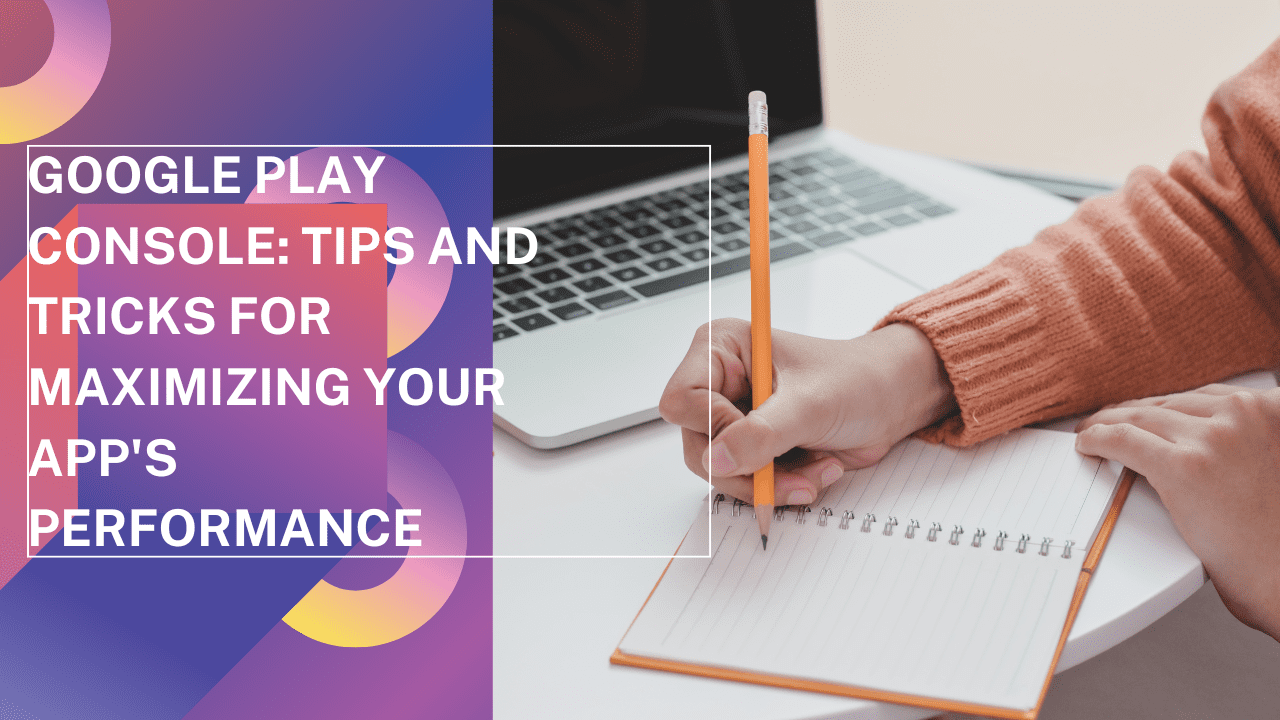How do you optimize apps on the Google Play Store?
To optimize apps on the Google Play Store, focus on improving app descriptions, using relevant keywords, creating eye-catching visuals, and gathering positive user reviews. Regularly update your app to maintain performance and user engagement.
How do you optimize app performance?
Optimize app performance by reducing load times, minimizing battery usage, and ensuring smooth navigation. Regularly test your app on different devices and use performance monitoring tools to identify and fix issues promptly.
How do you improve Android app performance?
Improve Android app performance by optimizing code, reducing app size, and using efficient algorithms. Implement caching strategies, optimize database queries, and ensure compatibility with various Android versions and devices.
गूगल प्ले स्टोर पर ऐप्स ऑप्टिमाइज़ कैसे करें?
गूगल प्ले स्टोर पर ऐप्स ऑप्टिमाइज़ करने के लिए, ऐप के विवरण को सुधारें, प्रासंगिक कीवर्ड का उपयोग करें, आकर्षक दृश्य बनाएं, और सकारात्मक उपयोगकर्ता समीक्षाएं प्राप्त करें। अपने ऐप को नियमित रूप से अपडेट करें।
How do I increase app store optimization?
Increase app store optimization by researching relevant keywords, improving app descriptions, using high-quality screenshots and videos, and encouraging user reviews and ratings. Regularly update your app to stay relevant and competitive.
How do I find ASO keywords?
Find ASO keywords by researching competitors, using keyword research tools, and analyzing user search behavior. Focus on high-traffic, low-competition keywords relevant to your app’s features and benefits.
Why is Google Play better than the App Store?
Google Play is often considered better than the App Store due to its wider global reach, easier app submission process, and more flexible app policies. It also offers more extensive analytics and testing tools for developers.
How do I ASO an Android app?
To ASO for an Android app, optimize your app title, description, and keywords. Use high-quality visuals, gather user reviews, and monitor your app’s performance. Regularly update your app to keep it relevant and engaging.
What is the maximum app size for the Google Play Store?
The maximum app size for the Google Play Store is 100 MB for the APK file. However, you can use APK expansion files to increase the size up to 4GB, split into two 2GB files.
How do you increase Google Play search traffic?
Increase Google Play search traffic by optimizing your app’s metadata, using relevant keywords, and maintaining high user ratings. Regularly update your app and promote it through social media and other marketing channels.
What are optimized apps?
Auto-optimizing apps is a feature that automatically improves app performance by managing background processes, clearing cache, and optimizing memory usage. This helps in maintaining smooth app operation and a better user experience.
How do you improve the quality of an app?
Improve the quality of an app by focusing on user-friendly design, efficient performance, and thorough testing. Regularly update the app based on user feedback and ensure compatibility with various devices and operating systems.
What is app efficiency?
App efficiency refers to how well an app performs its intended functions with minimal use of resources like memory, battery, and data. Efficient apps provide a smooth user experience and are less likely to crash.
How do you measure the app’s performance?
Measure app performance by tracking metrics such as load time, crash rates, user retention, and session length. Use analytics tools to gather data and identify areas for improvement.
How do I test Android app performance?
Test Android app performance by using profiling tools, running automated tests, and performing manual testing on different devices. Focus on load times, responsiveness, and resource usage to ensure optimal performance.
How do you evaluate mobile app performance?
Evaluate mobile app performance by analyzing user feedback, tracking key performance indicators (KPIs), and using monitoring tools to assess load times, crash rates, and user engagement.
How can I make my mobile app successful?
Make your mobile app successful by creating a user-friendly design, ensuring high performance, and regularly updating it. Promote your app through various channels, gather user feedback, and continuously improve based on that feedback.
What is the KPI for the application?
KPIs for an application include metrics like user retention, active users, session length, conversion rate, and user satisfaction. These indicators help measure the app’s success and identify areas for improvement.
How do I test the app loading time?
Test app loading time by using performance testing tools to simulate different network conditions and device types. Measure the time it takes for the app to become fully interactive after launching.
Which tool is best for mobile performance testing?
The best tool for mobile performance testing includes options like Firebase Performance Monitoring, AppDynamics, and New Relic. These tools help track app performance metrics and identify bottlenecks.
What is the performance of the app?
Performance in the app refers to how well the app runs in terms of speed, responsiveness, and resource usage. Good performance ensures a smooth and enjoyable user experience.
How do I test my mobile app’s responsiveness?
Test your mobile app’s responsiveness by using automated testing tools to simulate user interactions. Manually test the app on various devices and screen sizes to ensure it responds well under different conditions.
How do you make an Android application responsive?
Make an Android application responsive by optimizing the user interface, ensuring fast load times, and handling different screen sizes effectively. Use responsive design principles and thoroughly test on various devices.
How do I do manual testing for mobile apps?
Manual testing for mobile apps involves using the app as a typical user would to identify issues. Focus on key functionalities, user interface, and performance under different conditions.
What is a common way to troubleshoot mobile apps?
A common way to troubleshoot mobile apps is to check for updates, clear the app cache, and restart the device. If issues persist, review logs and user feedback to identify the problem.
How do you troubleshoot slow apps?
Troubleshoot slow apps by identifying resource-intensive operations, optimizing code, and reducing memory usage. Monitor app performance and use profiling tools to pinpoint and resolve bottlenecks.
How do I investigate application performance issues?
Investigate application performance issues by analyzing logs, monitoring resource usage, and using performance testing tools. Identify patterns in crashes or slowdowns and address the underlying causes.
How do I identify performance issues in an application?
Identify performance issues in an application by tracking key metrics like load time, crash rates, and user feedback. Use profiling tools to analyze the app’s performance and pinpoint problem areas.
What are 5 techniques you could use for basic troubleshooting?
Five techniques for basic troubleshooting include: restarting the app, clearing cache, updating the app, checking for device compatibility, and reviewing error logs for insights.
How do I solve software problems on Android?
Solve software problems on Android by updating the app, clearing the cache, restarting the device, and reinstalling the app if necessary. Review logs and user feedback to identify and fix issues.
How do I find a corrupted app on Android?
Find a corrupted app on Android by monitoring for frequent crashes, unusual behavior, or high resource usage. Use system logs and performance monitoring tools to identify problematic apps.
What is the best way to troubleshoot?
The best way to troubleshoot is to systematically identify the issue, gather relevant data, and test potential solutions. Use logs, user feedback, and performance metrics to guide the troubleshooting process.
What are some troubleshooting techniques?
Troubleshooting techniques include restarting the device, clearing the app cache, updating software, checking network connections, and reviewing logs. Systematically eliminating potential causes involves identifying the problem.
What are troubleshooting problems?
Troubleshooting problems involves diagnosing and resolving issues that affect an app’s performance or user experience. This process includes identifying the issue, testing solutions, and verifying the fix.
What are the three common troubleshooting actions?
Three common troubleshooting actions are restarting the app or device, clearing the app cache, and updating the app or operating system. These actions can resolve many common issues.
What is troubleshooting used for?
Troubleshooting is used for diagnosing and fixing issues that affect the functionality or performance of an app or device. It involves identifying the problem, testing solutions, and confirming the fix.
How does Fix force close apps on Android?
Fix force-closing apps on Android by updating the app, clearing its cache, and restarting the device. If the issue persists, uninstall and reinstall the app, or check for software updates.
Understanding the Google Play Console
The Google Play Console is a powerful tool that every Android developer should master.
From app submission to performance monitoring, it offers a suite of features that make managing your app lifecycle much easier.
Think of it as the control center for your app’s journey on the Google Play Store.
The Importance of Google Play Console
Why is the Google Play Console so crucial?
Imagine launching your app without any insights into its performance or user feedback.
You’d be flying blind!
The Play Console provides detailed analytics, helps you optimize your app for better visibility, and ensures you comply with Google’s policies.
Navigating the Google Play Console
When you first log in to the Google Play Console, it might feel overwhelming.
But fear not, it’s more user-friendly than it seems.
The dashboard gives you a comprehensive view of your app’s status.
You can monitor downloads, ratings, and reviews, and see how your app is performing compared to competitors.
Key Features of the Google Play Console
App Performance Monitoring
One of the standout features of the Google Play Console is app performance monitoring.
You get real-time data on crashes, ANRs (Application Not Responding errors), and other issues.
This helps you quickly identify and fix problems, ensuring a smoother user experience.
User Feedback Management
Managing user feedback is critical for app success.
The Google Play Console lets you respond to reviews directly, helping you engage with your users and build a loyal community.
Timely responses to user queries and issues can significantly improve your app’s reputation.
Store Listing Optimization
Optimizing your store listing is crucial for visibility.
The Google Play Console offers A/B testing for your app’s title, description, and screenshots.
By experimenting with different versions, you can determine what appeals most to users and boosts downloads.
Pre-Launch Reports
Before you launch an app, wouldn’t it be great to know if there are any hidden bugs?
The Google Play Console provides pre-launch reports that test your app on various devices and configurations.
This helps you catch and fix issues before your users do.
My Experience with Google Play Console
Getting Started with Play Console
When I first started using the Google Play Console, I was amazed at the level of detail it provided.
As a budding Android developer, having access to such comprehensive tools was invaluable.
From tracking my app’s performance to optimizing its store listing, the Play Console became an essential part of my development process.
Google Play Store Optimization
Optimizing for the Google Play Console means getting your app noticed.
Using relevant keywords in your app’s title and description is just the beginning.
The Play Console’s optimization tools allow you to fine-tune your listing with A/B testing and analytics, helping you understand what works best to attract users.
How to See App Size in the Play Store
Knowing your app’s size is crucial for optimization.
In the Google Play Console, you can easily see your app’s size under the “App Bundle Explorer”.
This section breaks down the size of each part of your app, helping you identify areas where you can reduce bloat.
How to Minimize App Size in Android
Minimizing your App size can enhance performance and download rates.
Use the Google Play Console to analyze your app’s components and identify large assets that can be compressed or optimized.
Reducing image sizes, optimizing code, and removing unnecessary libraries can make a significant difference.
How to Add Keywords in Google Play Console
Adding keywords effectively can improve your app’s visibility.
In the Google Play Console, focus on the app’s title, short description, and full description.
Incorporate high-traffic keywords naturally within these sections to ensure your app ranks higher in search results.
Any Experience Using Play Console
Over the years, my experience with the Google Play Console has been transformative.
It has equipped me with the tools to not only launch but also sustain successful apps.
From pre-launch testing to post-launch analytics, every feature has been pivotal in my app development journey.
Play Store App Size Limit
Knowing the size limits for your app is essential.
The Google Play Console enforces a maximum APK size of 100MB
However, you can use APK expansion files to extend this limit, allowing up to 4GB for your app’s assets.
This flexibility is crucial for developing rich, content-heavy apps.
Analytical Insights into Google Play Console
Tracking Performance Metrics
The Google Play Console offers deep analytical insights.
By tracking metrics like user acquisition, engagement, and retention, you can make data-driven decisions.
For instance, if you notice a drop in user retention, you can investigate and address potential issues.
Understanding User Behavior
With the Google Play Console, you can gain a deeper understanding of user behavior.
The Console’s user acquisition reports show where your users are coming from, helping you optimize your marketing efforts.
Understanding these patterns allows you to tailor your app to better meet user needs.
Utilizing Crash Reports
Crash reports in the Google Play Console are a goldmine for debugging.
They provide detailed information about crashes, including stack traces and device configurations.
This data helps you pinpoint and resolve issues swiftly, ensuring a more stable app experience.
Enhancing User Engagement
User engagement is a key metric for app success.
The Google Play Console helps you monitor engagement through metrics like session duration and user interactions.
By analyzing this data, you can implement features that keep users coming back to your app.
Maximizing the Benefits of Google Play Console
Regular Updates and Maintenance
Regularly updating your app is crucial for maintaining its performance and relevance.
The Google Play Console makes it easy to push updates and monitor their impact.
Keeping your app updated not only improves performance but also boosts user satisfaction and retention.
Leveraging Beta Testing
Beta testing is a powerful way to gather feedback before a full-scale launch.
The Google Play Console allows you to manage beta testing groups and roll out updates to a limited audience.
This helps you identify and fix issues before they affect a larger user base.
Responding to User Reviews
Engaging with your users is essential.
The Google Play Console lets you respond to reviews, showing that you value user feedback.
Positive interactions with users can lead to higher ratings and better visibility on the Play Store.
Using Analytics for Continuous Improvement
The analytical tools in the Google Play Console are invaluable for continuous improvement.
By regularly reviewing performance metrics, user feedback, and crash reports, you can make informed decisions to enhance your app.
This ongoing process of optimization ensures your app remains competitive and user-friendly.
Real-Life Example: A Developer’s Journey
Let’s take the example of a developer who launched a fitness app.
Initially, the app faced several crashes and performance issues.
Using the Google Play Console, the developer identified the problems through crash reports and user feedback.
By addressing these issues and optimizing the app’s performance, the developer saw a significant increase in user retention and positive reviews.




